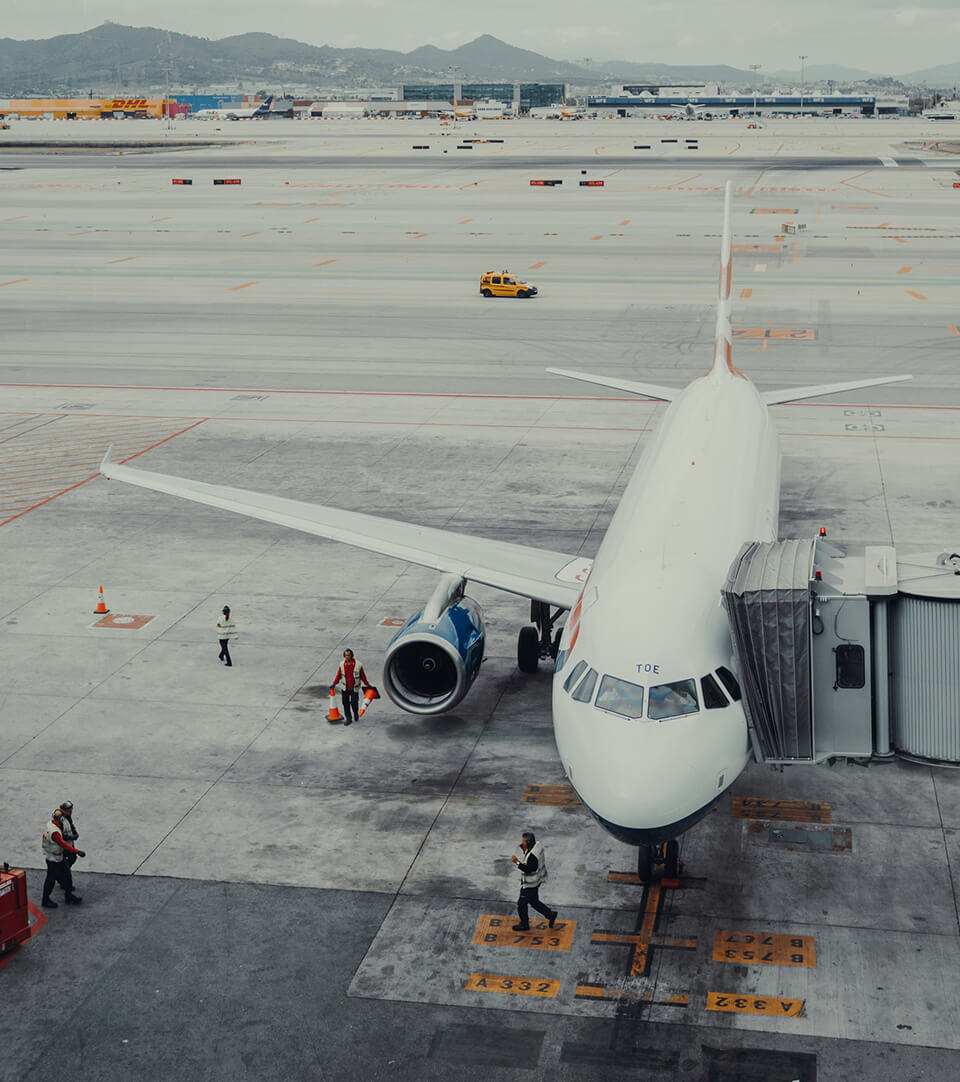- Integrated Multimodal Airport Operations for Efficient Passenger Flow Management
- Consortium: Nommon (project coordinator), Cranfield University, ISDEFE, Aimsun, Amsterdam University of Applied Sciences, Technical University of Dresden, AENA, EMT Palma and London City Airport.
- 2020 – 2022
- imhotep-h2020.eu

The project
The project IMHOTEP envisioned a multimodal European transport system where the different modes were seamlessly integrated, so that passengers travel from door to door in an efficient, sustainable, and resilient manner. Within this vision, airports would become multimodal connection nodes thanks to interconnected platforms and services that would provide a common vision of the situation of the transport systems, allowing a more efficient management of the passenger flows.
Goals
The goal of IMHOTEP was to develop a concept of operations and a set of data analysis methods, predictive models, and decision support tools that allow information sharing, common situational awareness, and real‑time collaborative decision-making between airports and ground transport stakeholders.
The specific objectives of the project were the following:
- Propose a concept of operations for the extension of airport collaborative decision-making to ground transport stakeholders, including local transport authorities, traffic agencies, transport operators, and mobility service providers.
- Develop new data collection, analysis and fusion methods able to provide a comprehensive view of the door‑to‑door passenger trajectory.
- Develop predictive models and decision support tools able to anticipate the evolution of an airport’s passenger flows within the day of operations and assess the operational impact on both airport processes and the ground transport system.
- Validate the proposed concept and the newly developed methods and tools through a set of case studies conducted in direct collaboration with airports, local transport authorities and transport operators, in order to demonstrate the maturity of the technology, evaluate its benefits, and assess the appropriateness of the transition to SESAR Industrial Research.
Nommon’s role
As project coordinator for IMHOTEP, Nommon’s role encompassed multiple responsibilities. Firstly, to manage, coordinate and oversee the entire project, ensuring the achievement of the project’s goals within agreed parameters of time, budget and quality. Operating as technical partner, Nommon was in charge of developing a set of data analysis and fusion methodologies for the detailed reconstruction of the door-to-gate and gate-to-door passenger journey from a wide range of heterogeneous data sources. Nommon also led the development of a decision-making support system that allows the user to perform what-if analysis in order to assess the operational impact of different flow management measures on both the terminal airport processes and the ground transport system.
Results
The main outcomes of the project were:
- The definition of a concept of operations for the inclusion of ground transport stakeholders in the airport collaborative decision-making process, filling the gap between surface and air transport network. The proposed concept is based on a passenger-centric perspective, which leads to a complete understanding of the impact that operational decisions have on the holistic door-to-door passenger journey.
- The development of a set of newly data analytics algorithms and methodologies able to reconstruct the complete door-to-gate and gate-to-door passenger journey in an accurate way from the coherent fusion of different big data and conventional sources.
- The development of a set of predictive models able to short-term forecast the evolution of passengers flows in the access and egress legs and in the terminal processes, allowing real-time collaborative decision-making between airports and ground transport stakeholders and enhanced passenger information services.
- The development of a visualisation and decision support tool able to present a set of relevant KPIs to the user for the assessment of the impact that different flow management measures have in the complete transport chain, including both air and surface transport.
- The assessment of the performance benefits of the proposed concept and the developed technologies, which include aspects such as reduction in travel times, reduction in queuing times at airport facilities, reduction in road congestion, reduction of CO2 emissions or reduction of passengers that lost their flight.

This project received funding from SESAR Joint Undertaking (SJU) under grant agreement Nº 891287. The SJU receives support from the European Union’s Horizon 2020 Research and Innovation Programme and the SESAR JU members other than the Union.
